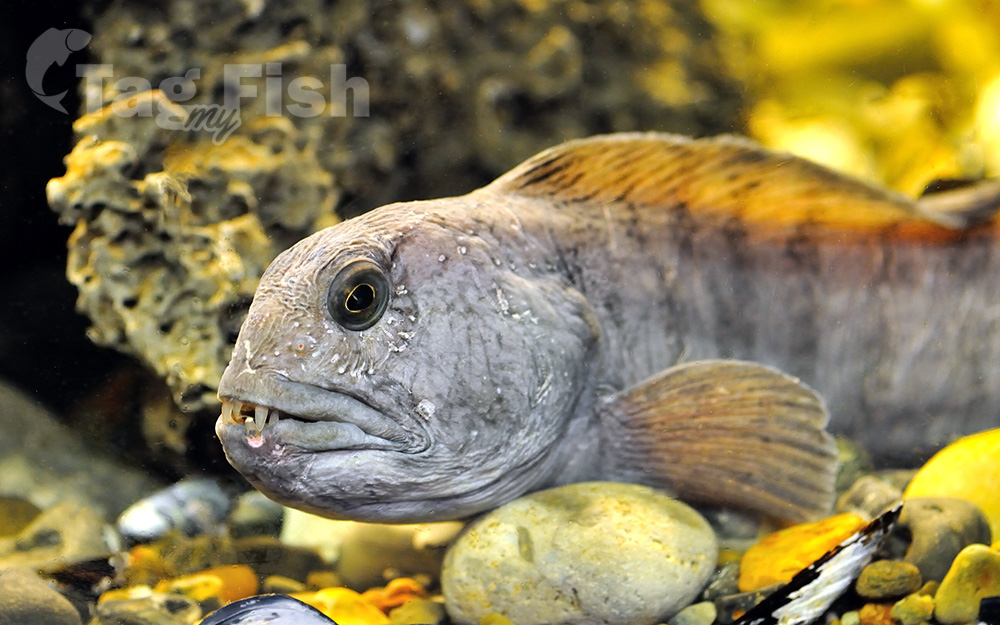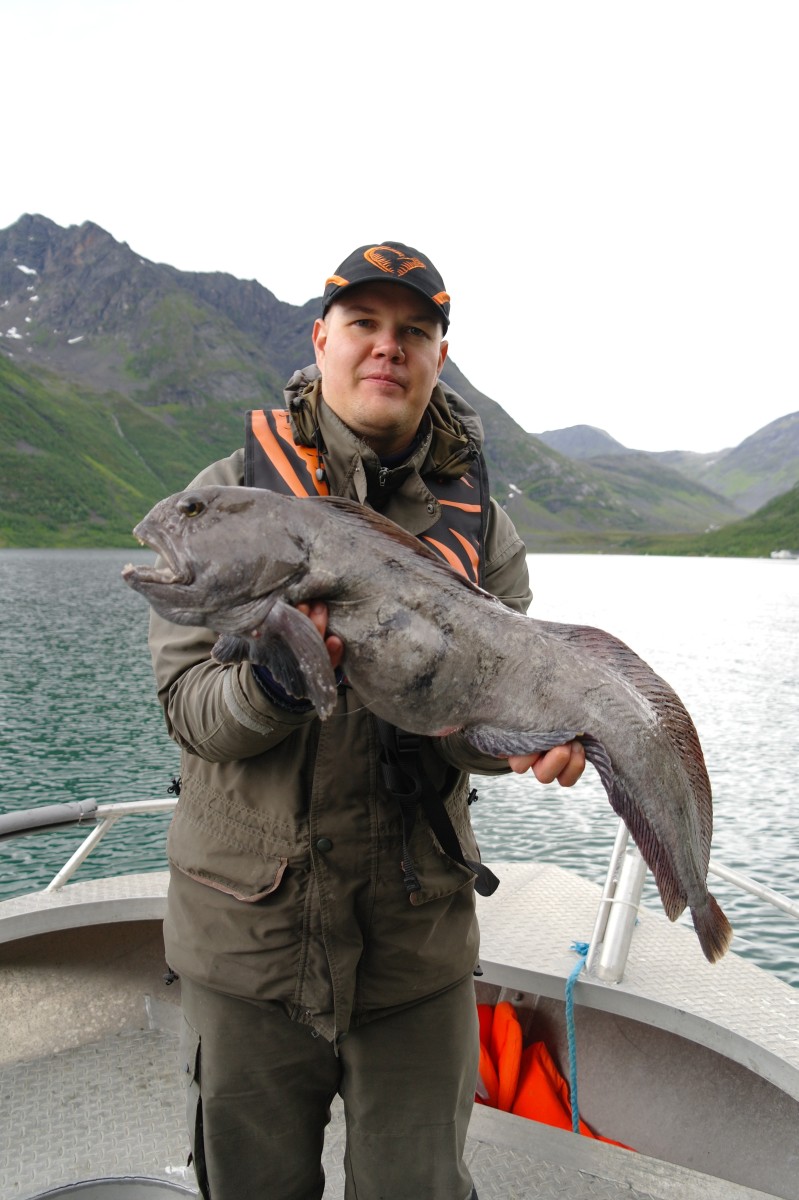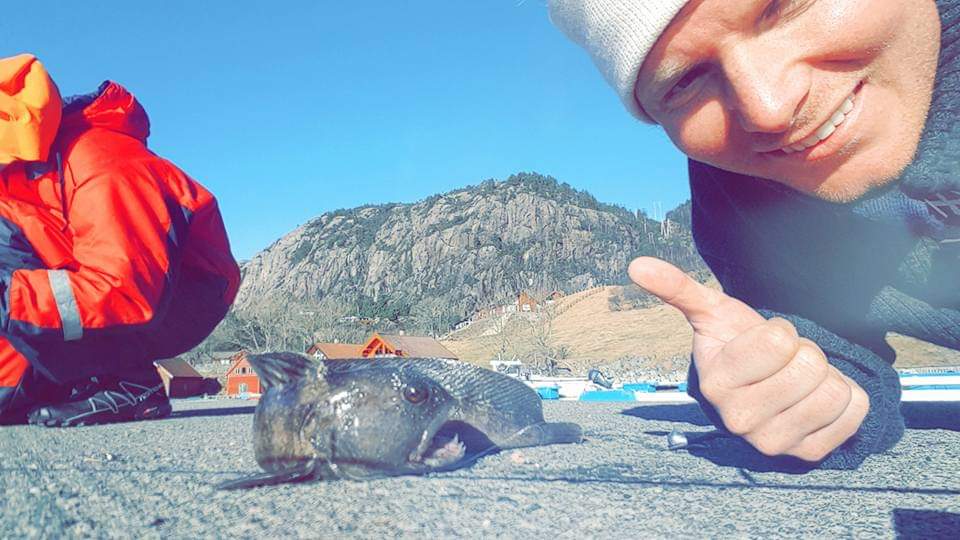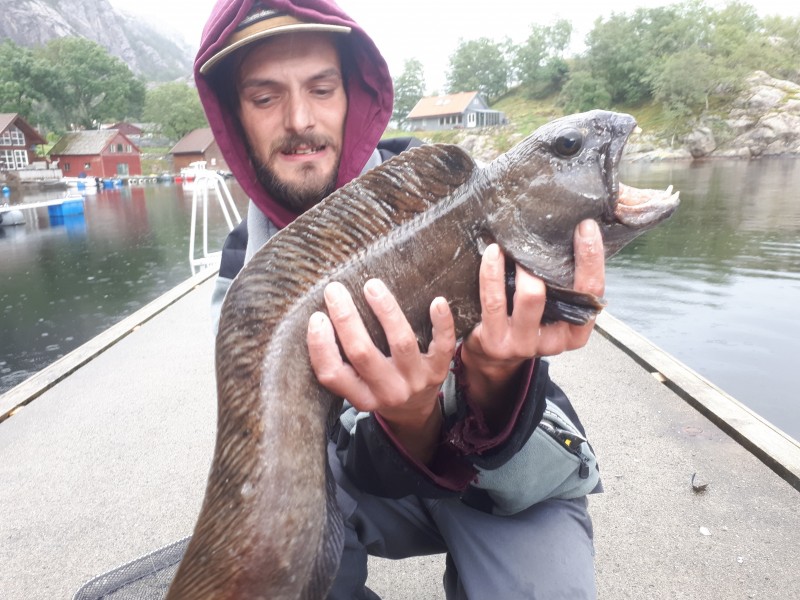Atlantic wolffish
(Anarhichas lupus)

Classification
General data
The Atlantic wolffish (Anarhichas lupus), also known as the seawolf, Atlantic catfish, ocean catfish, devil fish, wolf eel (the common name for its Pacific relative), woof or sea cat, is a marine fish of the wolffish family Anarhichadidae, native to the North Atlantic Ocean.
Apart from their unique appearance wolffish are distinguished by the natural antifreeze they produce to keep their blood moving fluidly in their very cold habitat, involvement by both the male and female in brood bearing, and the large size of their eggs. They are also an important factor in controlling green crab and sea urchin populations, which can become overly disruptive to habitats if left unchecked. Wolffish population success is also an important indicator of the health of other bottom-dweller populations, such as Atlantic cod.
Characteristics
The Atlantic wolffish has retained the bodily form and general external characteristics of small blennies (Blennioidei). The largest specimen recorded measured 1.5 m (5 ft) long and weighed almost 18 kg (40 lb). Its body is long, subcylindrical in front, compressed in the caudal portion, smooth and slippery, the rudimentary scales being embedded and almost hidden in the skin. Atlantic wolffish vary in color, usually seen as purplish-brown, a dull olive green, or blueish gray. An even dorsal fin extends the whole length of the back, and a similar fin from the vent to the caudal fin, as in blennies. The pectorals are large and rounded and the pelvic fins are entirely absent. Its obtuse, eel-like body type makes the fish swim slowly, undulating from side to side, like an eel.
The Atlantic wolffishs distinguishing feature, from which it gets its common name, is its extensive teeth structure. Its dentition distinguishes the Atlantic wolffish from all the other members of the family Anarhichadidae. Both the lower and upper jaws are armed with four to six fang-like, strong, conical teeth. Behind the conical teeth in the upper jaw, there are three rows of crushing teeth. The central row has four pairs of molars and the outer rows house blunted conical teeth. The lower jaw has two rows of molars behind the primary conical teeth.
Atlantic wolffish inhabit both the west and east coasts of the Atlantic. In the west Atlantic, they are present as far north as the Davis Strait, of the Canadian territory of Nunavut, populating the shores of Greenland, Newfoundland, and Nova Scotia, extending as far south as Cape Cod. Although they are seldom seen south of Cape Cod, there have been sightings in New Jersey. The most dense populations are in Georges Bank, the Gulf of Maine and the Great South Channel. In the eastern Atlantic, they range from Russias White Sea and Novaya Zemlya, through the Nordic countries and British Isles, to the Bay of Biscay.














